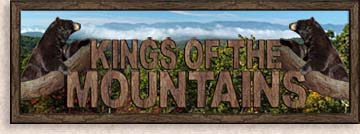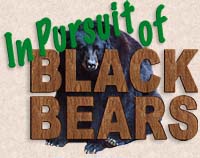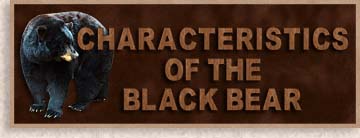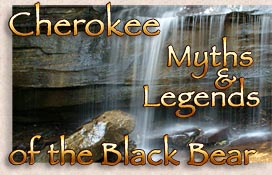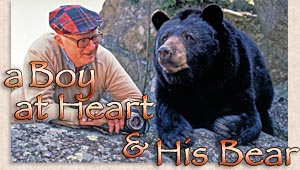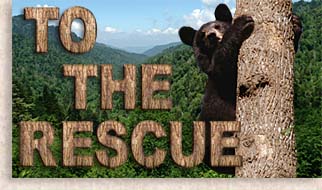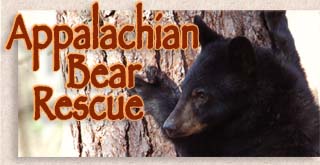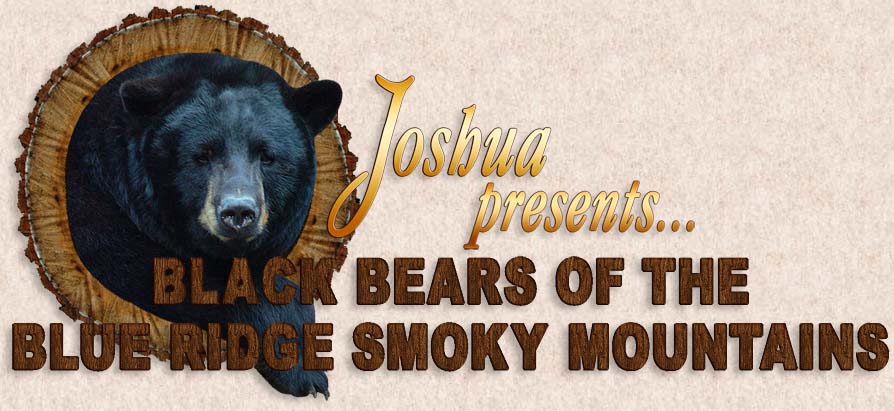
Long before any man ever set foot on the North American Continent, the Black Bear of Northeastern America could often be seen standing upright on its hind legs surveying its territory from horizon to horizon. Masters of their domain, the great Black Bear enjoyed the prosperity of all that the earth had to offer. When the first Native Americans began to appear, they found benefit in revering the Black Bear both as a source of prey and as a spiritual guide. As brothers often do, they disputed over territory. Even with the loss of a bear's life or the life of a native hunter they, chose to live in continual respect of one another, developing a close relationship both in the physical and spiritual world. Today the Black Bear is making an impressive comeback though their troubles are not totally behind them. Poachers, consumption of human food and garbage, vehicular homicides, lost habitat and orphaned cubs are of the greatest concern for these beloved Black Bears and an issue that must be taken seriously. Black Bears, the icons of the Blue Ridge Smoky Mountains are considered both loveable and ferocious, they represent a species of wildlife that has fascinated us for generations. We are glad you have joined us to learn more about the Kings of the Mountains through the many featured articles listed below and trust you will return to the Blue Ridge Highlander again and again to enjoy these wonderful features we have prepared for your reading pleasure. If you are interested in the preservation of Black Bears, click here to learn more.... |
|
For over two hundred years, we the hierarchy of the royal family of the Ursus Americanus, have been in conflict with the invaders of the outer realm. For many generations, it has become a war that we have been losing against a most formidable alien foe...read on... |
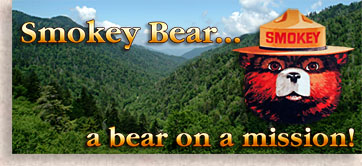 “In the year of 2008 CE, the United States experienced 8,856 wildfires burning 1,862,477-acres that were caused by an Act of Nature or natural order attributed to lightning strikes. Also in 2008 there were 70,093 wildfires caused by human activities burning 3,429,991-acres throughout the intercontinental US. An amazing fact to consider is that 58% of human caused wildfires and 58% of acres burned from human caused fires were located in the South and Southeastern United States.”...read on... “In the year of 2008 CE, the United States experienced 8,856 wildfires burning 1,862,477-acres that were caused by an Act of Nature or natural order attributed to lightning strikes. Also in 2008 there were 70,093 wildfires caused by human activities burning 3,429,991-acres throughout the intercontinental US. An amazing fact to consider is that 58% of human caused wildfires and 58% of acres burned from human caused fires were located in the South and Southeastern United States.”...read on... |
They represent what is wild, beautiful and free, a symbol of the good life in its natural state...read on... |
When Mrs. Highlander and I set out to discover more about Black Bears, it brought us into a greater awareness of the challenges Black Bears face daily in their continual pursuit for survival....read on... |
|
Black Bears, also known as the American Bear (Ursus Americanus), are the most common single bear species. There are 80 different North American Bear species; many of these are considered variants of the brown and grizzly bear. Though most commonly considered black in color they are actually color phases of the blue-black, cinnamon or blue-gray glacier bear....read on.... |
The innate desire to search beyond the natural has challenged many a soul, drawing them into uncharted territory on an enchanted quest to peer into the other side. ...read on... |
This special tale of Hugh's life, begins unbeknownst to him and his family when Mildred the Bear was born February 7, 1966 at the Atlanta Zoo in Georgia. Two years later, needing a wilderness home of her own...read on... |
The Tennessee entrance to the Great Smoky Mountains National Park is just southeast of Knoxville and the Knoxville Zoo, which is about an hour away with good traffic flow. It was mid-afternoon when we arrived and the warm sun was glaring overhead that autumn day...read on.... |
|
For years we wanted to create a section within the Highlander entitled "Kings of the Mountains, In Pursuit of the Black Bear." As with all of our feature stories we do a lot of research and whenever possible, we get involved so that our readers can hopefully feel our first hand experiences. Until now, I have held back on what made this particular journey so special. This unique experience was more than Mrs. Highlander and I had expected, and one we will always remember...read on... |
|
The ABR orchestrates both the release and medical care for the black bear cubs with the cooperation from the Tennessee Wildlife Resource Agency (TWRA), the National Park Service and the University of Tennessee's School of Veterinary Science. The Appalachian Bear Rescue support, in-part, is provided by other non-profit organizations such as Friends of the Great Smoky Mountains National Park, the Alcoa Foundation and other generous grants, sponsorship and private donations...read on.... |
|
By nature, wild bears prefer solitude within the wilderness, it's the natural way and safer for both bear and humans alike. In the 21st century the presence of the Black Bear is less apparent than it was 30 to 40 years ago. Before the establishment of the Great Smoky Mountains National Park, there were only 200 Black Bears inhabiting the national park region, due to logging and over hunting. The creation of the national park allowed the wild bears an opportunity to live a more natural existence in their wilderness homelands...read on... |
Pamplets from
B.E.A.R. is a Task Force of the Western NC Alliance Bear Attractants & Deterrants Bear Safety at Home Hiking and Camping Bear Saftety |
Join our e-newsletter mailing list, to be notified of new stories as they are added. |
![]()
Sign
up for the Blue Ridge Highlander Newsletter, Messages from the Mountains
to find out first about our new feature stories, road trips and special offers
Your e-mail addresses will not be sold or given away to anyone.
Privacy
Policy
Interested in your business being on the Highlander, click here...
Let our visitors tell you about the Highlander...
Click the feathers to go to the Highlander site
map...

